Usually one or two prototypes are built before a tank goes into production with only a few changes. However, there are exceptions. With IS series of tanks there were three of them, two of which were radically different from the final model. A Soviet T-44 medium tank evolved in a similar way. Even without significant changes in requirements, this tank went through a series of evolutionary steps. The second variant of this vehicle was created as a result of trials held in February-March 1944. One of the main differences of the intermediate prototype was the armour. Trials showed that it was not enough to protect from the German 88 mm Pak 43 L/71.
An expectation half met
Unlike the unlucky T-43, the T-44 caught the eye of senior officials from the very start. Stalin knew about this tank by late December of 1943 and inquired about the state of affairs of its development with stunning regularity. In addition, Stalin raised the question of mass production in early February of 1944. By that time the first two prototypes were only undergoing factory trials. Stalin asked about this again on February 13th and proposed that the work be expedited.
As any revolutionary vehicle, the T-44 had its advantages as well as drawbacks. There were defects linked with the driver's cabin, heating up of the left side due to the design of the exhaust system, and others. More issues were discovered when the second prototype was tested at the NIBT proving grounds in Kubinka. The T-44 had many good qualities, but the commission also indicated many defects. Their conclusion was that the issues should be corrected and a new tank built within a month. People's Commissar of Tank Production V.A. Malyshev supported this conclusion and gave the order to build two T-44 tanks with the defects corrected on March 23rd. The diameter of the tanks' road wheels was also increased to 830 mm (same as a T-34).
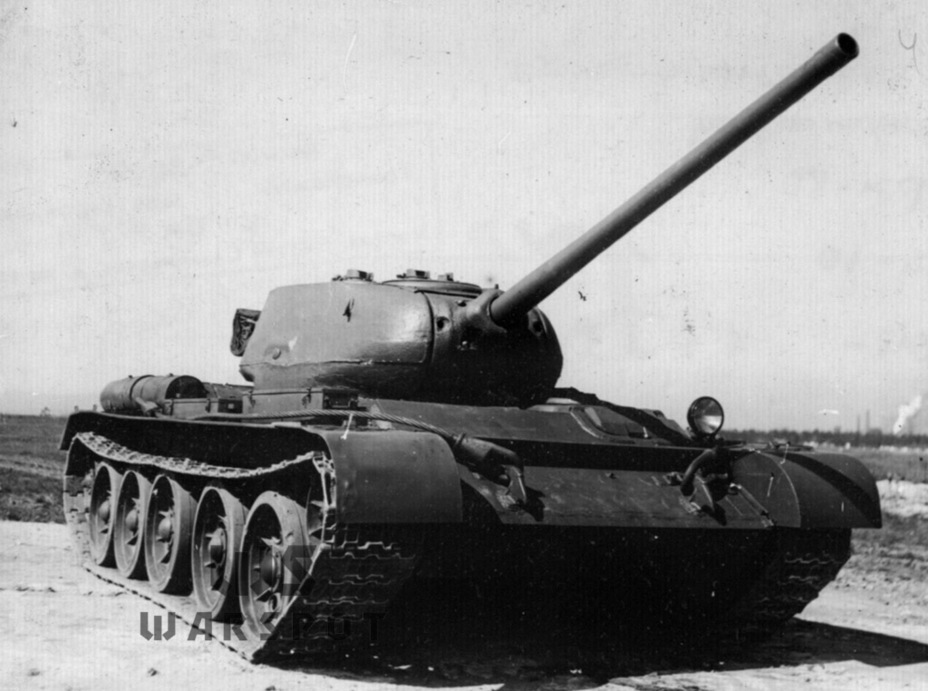
In practice not everything was this simple. For starters, the commission's conclusions were based on trials and studies that were limited in scope due to the rush. The penetration trials held on April 4-5th gave a lot of food for thought. It turned out that the driver's cabin was a weak point in addition to all other complaints about it. An order to change the cabin to make it less vulnerable to enemy fire was given. The lower front plate and hull sides were also to be reworked.
Of course, these changes needed time, and so not a single hull was ready by April 15th at factory #183. Even if the hulls were delivered on time, not a single T-44 would be finished by the deadline, as factory #75 hadn't delivered any V-2-44 engines. The turret also had to be redesigned. With the rejection of the D-25-44 there was no longer a need for an 1800 mm turret ring, the 1600 mm turret ring variant was considered optimal. Second, the turret needed to be reworked, and not just as a result of proving grounds trials. The removal of the driver's cabin allowed the designers to get rid of the «neck» that made the turret vulnerable to enemy shells. Finally, the armament changed from the D-5T to the ZIS-S-53. This gun became the stock weapon of the T-34-85 in the spring of 1944 and production of the D-5T ended. There were many good reasons why production of the improved T-44 was delayed.
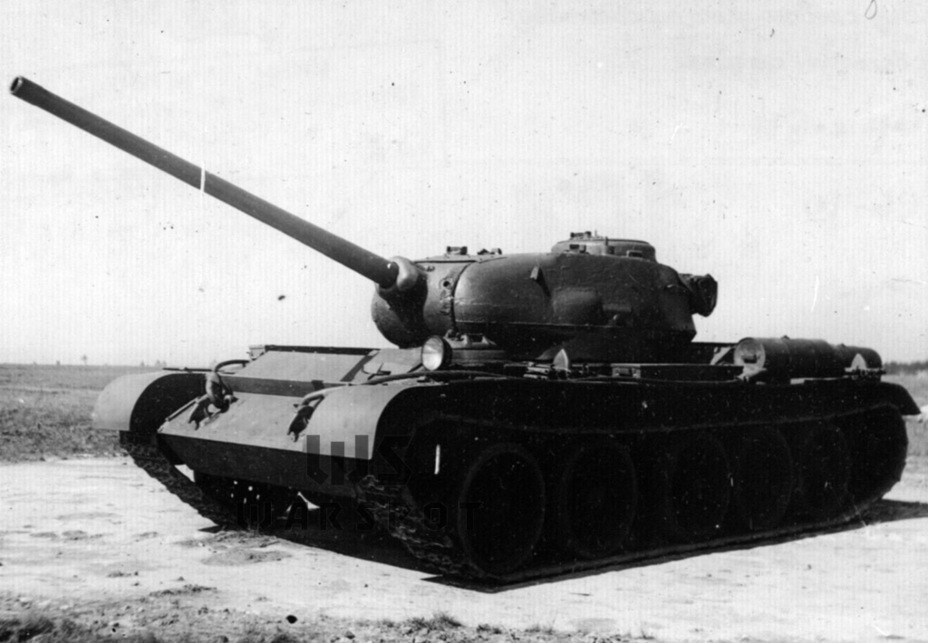
The GBTU considered measures taken to improve frontal protection insufficient. A report with the results of the trials was sent to L.P. Beria on March 17th. It indicated that it was necessary to increase the thickness of the front hull to 90 mm. This was caused by the results of the Battle of Kursk and the first application of IS tanks in battle. It turned out that the Panther's gun could penetrate both the front of the hull and the turret from a kilometer away. The GBTU insisted that the armour must be stronger. The GBTU also insisted on a planetary transmission. A letter with similar contents signed by Marshal Fedorenko and Lieutenant General Biryukov was sent to Beria on April 20th, 1944. It repeated the need to make the front of the hull stronger. The letter to Beria and subsequent letter by GBTU chief Lieutenant General Vershinin to Malyshev changed nothing.
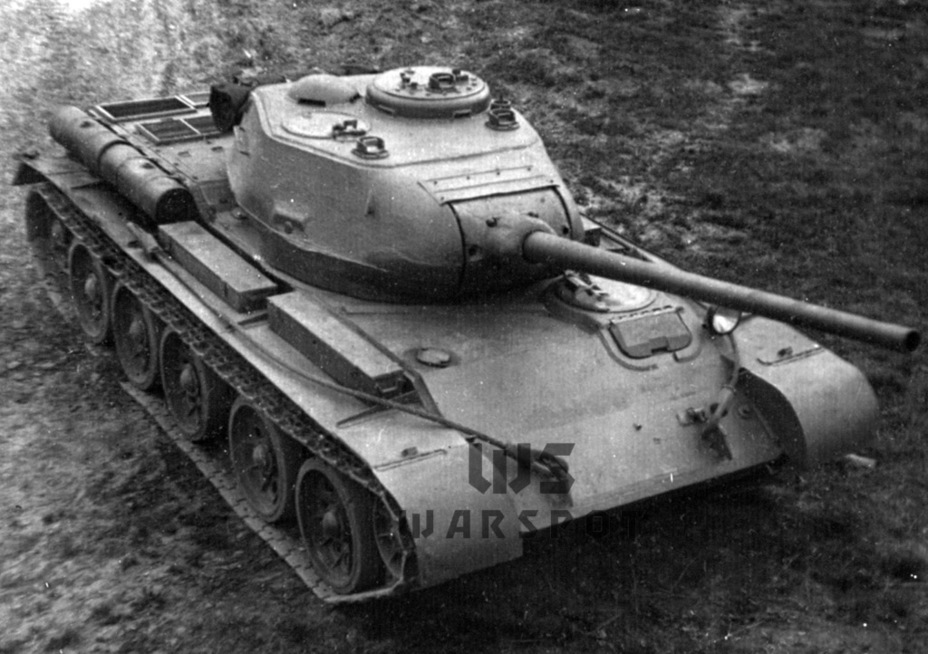
The modernized T-44 began to take shape closer to the end of April. On April 28th the GBTU was sent brief characteristics of the improved vehicle. The factory also promised to deliver two tanks by May 5th. The tanks were different, one would have 60 mm thick sides, the second 75 mm thick. In reality, just the first prototype with 60 mm thick sides was ready by May 12th. The vehicle had only a portion of requested improvements. The thickness of the front armour was the same as before (75 mm). The slope of the lower front plate increased to 45 degrees, which made it more resilient. The idler crank that was destroyed during trials was replaced with a better one. Splash protection for the turret ring was added. The cabin remained in place, but it was now lower and the new observation port flap was 100 mm thick. The driver's seat changed due to complaints about it.
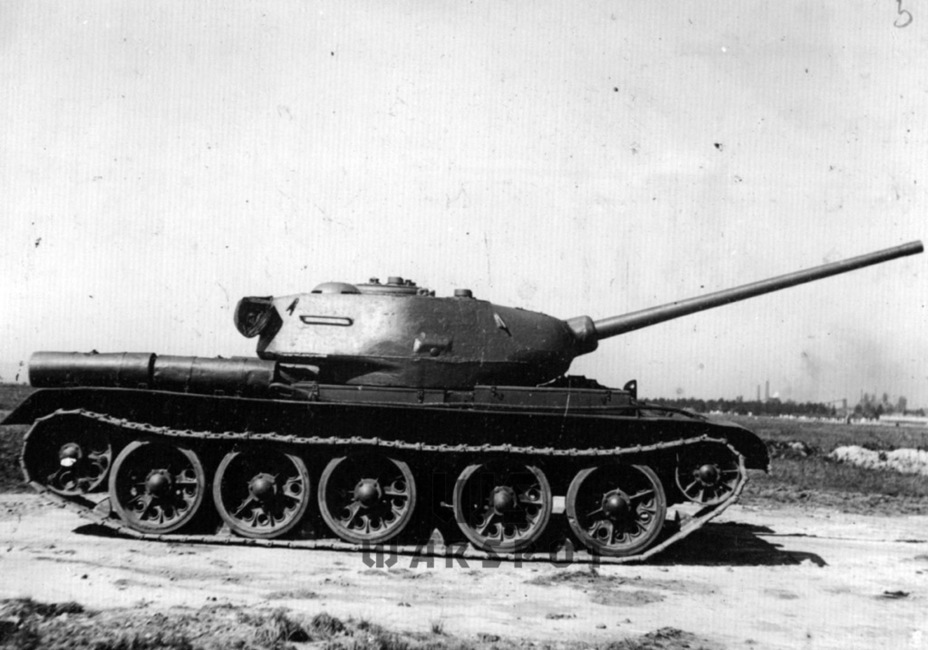
There were also many changes of the running gear and the engine group. The V-2-44 engine never arrived from factory #75, but the bulge was still removed. An intermediate variant of the engine was built in Nizhniy Tagil, the V-2-IS with the oil pump moved to the left of the engine and the water pump moved to the gearbox. This was only a temporary solution, but it was the only way to correct issues with the engine. The oil system and cooling system changed, the tank also received two Multicyclone filters. The exhaust system was altered due to issues with the left side of the hull heating up. Now the gases were vented to the left through one pipe located on the left fender. The fuel system also changed. Like on the draft project, a 110 L tank was added to the front and the design for fuel caps was improved. The gearbox, final drives, and final drive clutches were also reworked. Despite the requirement for 830 mm road wheels the second iteration of the T-44 had new road wheels 790 mm in diameter. This was an attempt to solve the problem of damage to road wheel rims. The position of the wheels also changed, the first pair was moved slightly forward, the rest slightly back.
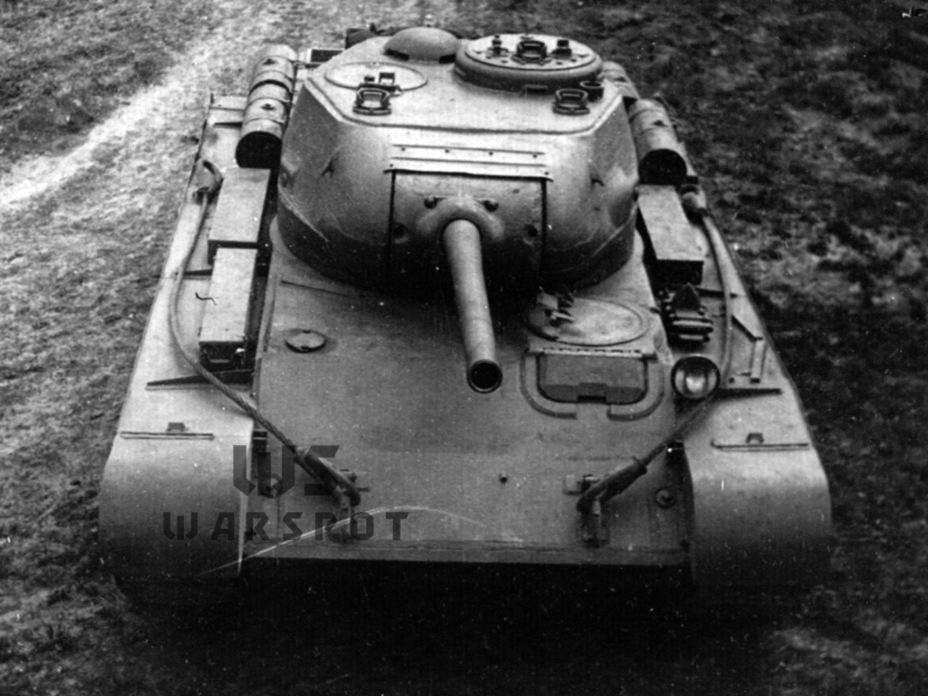
The turret was radically reworked. The number of changes was so great that it would be more accurate to say that it was a completely new design. Unlike the hull, it had thicker armour than its predecessor. The front was 115 mm thick, the sides were 90 mm thick, the rear 75 mm. Due to the removal of the driver's cabin the overall height of the turret could be reduced by 75 mm. The shape of the turret changed and the pistol ports were altered. The front of the turret changed to accommodate the ZIS-S-53 gun. The roof changed to increase the size of the welded section. The gunner was given an MK-IV periscope instead of a periscopic sight, which improved observation from the front slit of the commander's cupola.
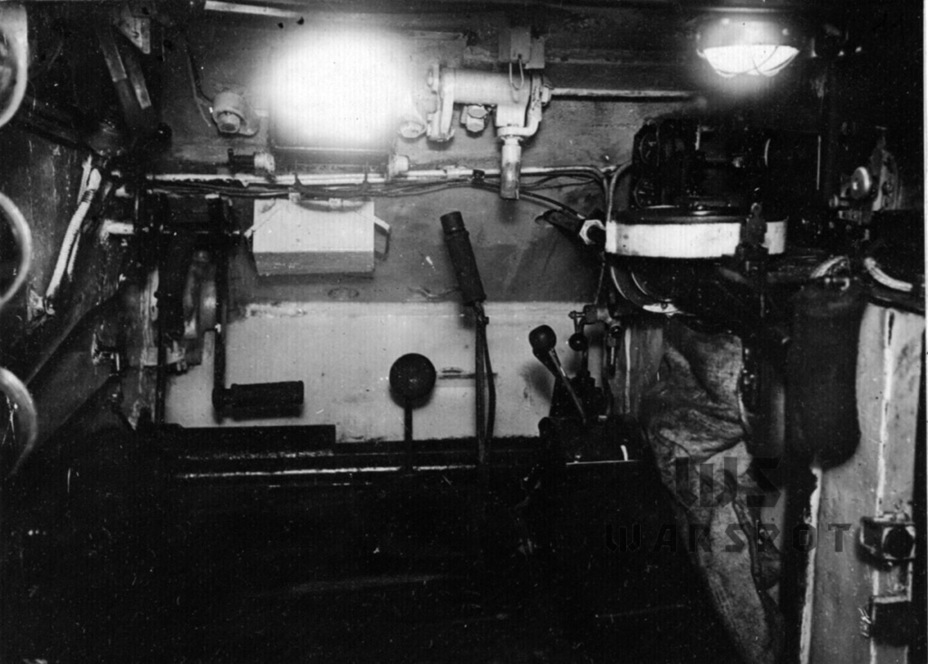
As it often happens, these improvements came at the cost of mass. The tank with 75 mm thick sides weighed 31,3 tons or 900 kg heavier than the second T-44 prototype. However, the T-34-85 was 900 kg heavier than that and had a weaker engine to boot. The size was also significantly different. The second variant of the T-44 was 2290 mm tall while the T-34-85 was 2700 mm tall.
Intermediate prototype with intermediate results
Factory trials of the first modernized T-44 began on May 13th, 1944. The tank had its final drive gear train lubricated with aircraft oil during the first two days of driving, and it turned out that it made a poor lubricant. The temperature rose to 175 °C after a continuous 50 km drive. The oil also leaked through the seals and had to be topped up every 40-50 km. After the first outing the design of the gear train was changed and an oil pump with two sections was added. Issues with overheating stopped and the tank had travelled for 2118 km by June 4th.
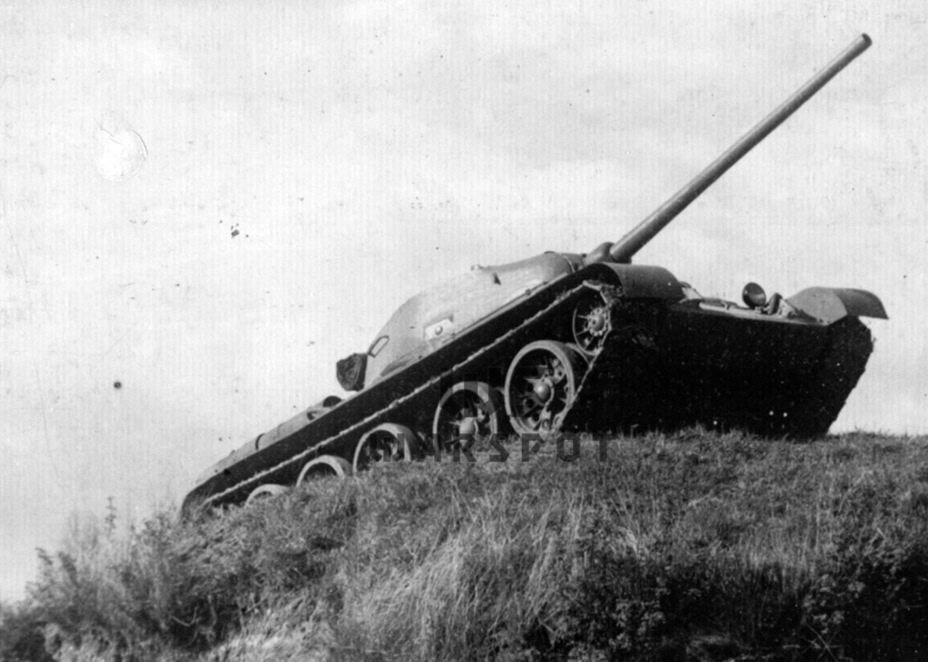
The increased weight exacerbated the issue with road wheel rim wear seen on the T-34 and T-43. 8 wheels had to be replaced during trials. The 5th wheel on the right side had to be replaced four times. There were other issues, including issues with the transmission. 25 issues were noted in total. A few of them had to do with the driver's station. The decision to lower his cabin was correct from the structural point of view, but it was now too low. An average driver would have his head right up against the hatch. The seat was deemed uncomfortable and the location of the controls was poor. There were also complaints about the ammunition rack, placement of the radio in the turret, and the fighting compartment layout. The alteration of the vehicle solved some problems, but now there were new ones.
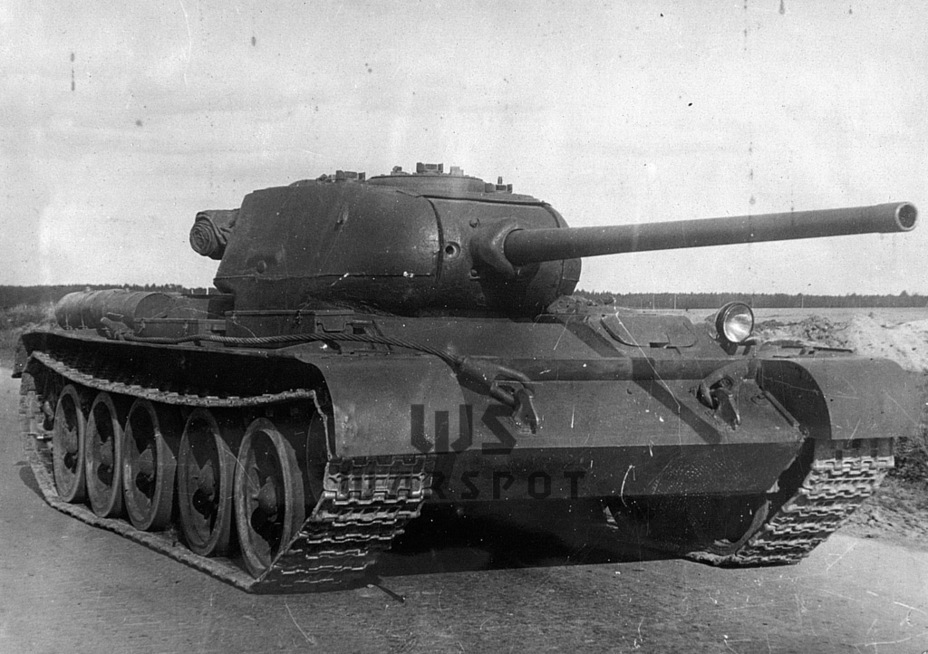
Factory #183 worked on a second prototype with 75 mm thick sides while trials of the first tank continued. On May 31st, Malyshev and Fedorenko signed a joint order #366/098 to conduct proving grounds trials of this vehicle. According to the order, trials would begin on June 10th and end on June 25th. 1000 km of driving would be performed, 330 on a highway, 400 on a dirt road, 200 off-road, and 70 km was reserved for special trials. In reality the trials were delayed for various reasons and the tank only arrived at the NIBT proving grounds by June 15th.
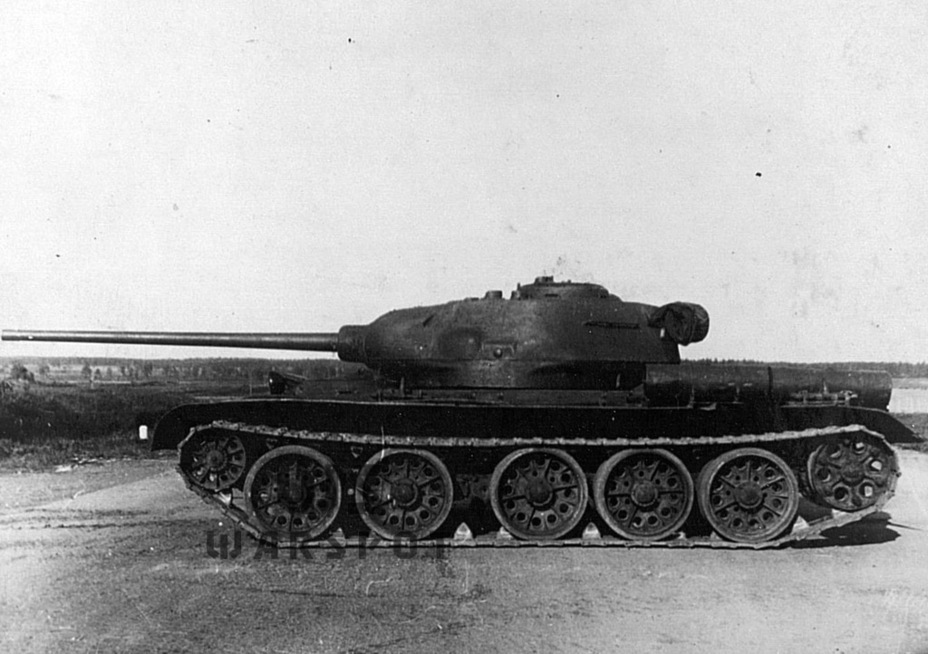
The delay in arrival was only the first of many. They only ended on July 17th instead of June 25th. 16 were spent on driving and special trials, 2 more on gunnery trials, the rest on maintenance. The tank drove for 1347 km in total, 474 on a highway, 683 on a dirt road, 61 off-road, 99 on special trials, and 25 during gunnery trials. The tank was tested during the hottest time of the year with temperatures reaching 40 °C.
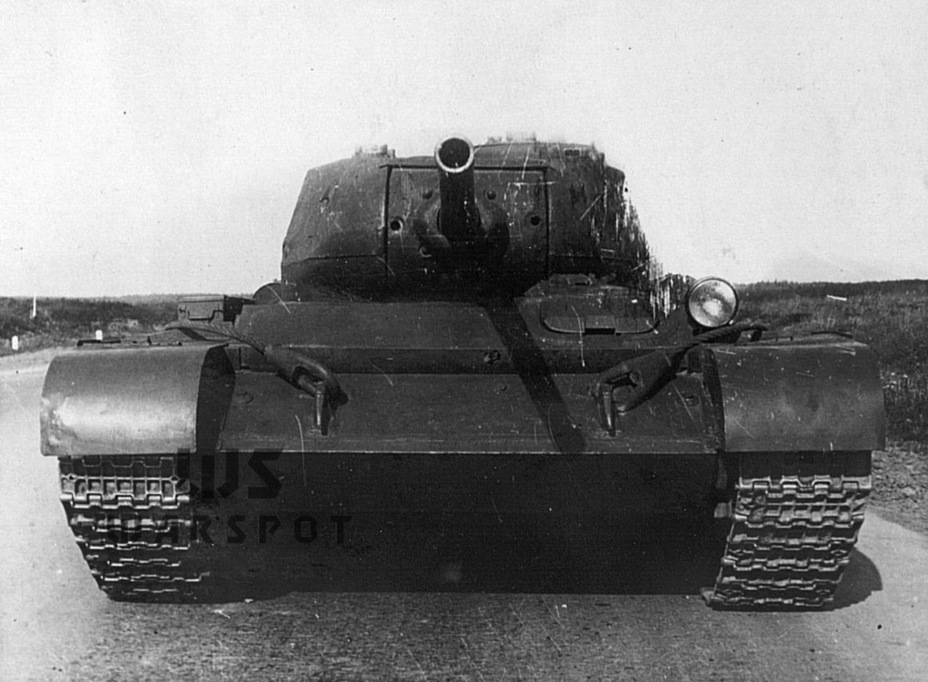
The increase in mass had an impact on the tank's agility. A maximum speed of 51.98 kph was reached on flat ground, less than the first variant. The average speed on a highway was 35 kph, about the same as the first variant, but recall that they were tested on a highway covered in snow. There was another limiting factor when it came to speed: the destruction of road wheel rims. Changing their diameter or composition of rubber helped little. However, there were some positive changes. The fuel expenditure on a highway was only 158 L per 100 km, 25% better than the first variant. The increase in fuel capacity and decrease in expenditure resulted in a range of 290 km, 103 more than what the first variant achieved in the winter.
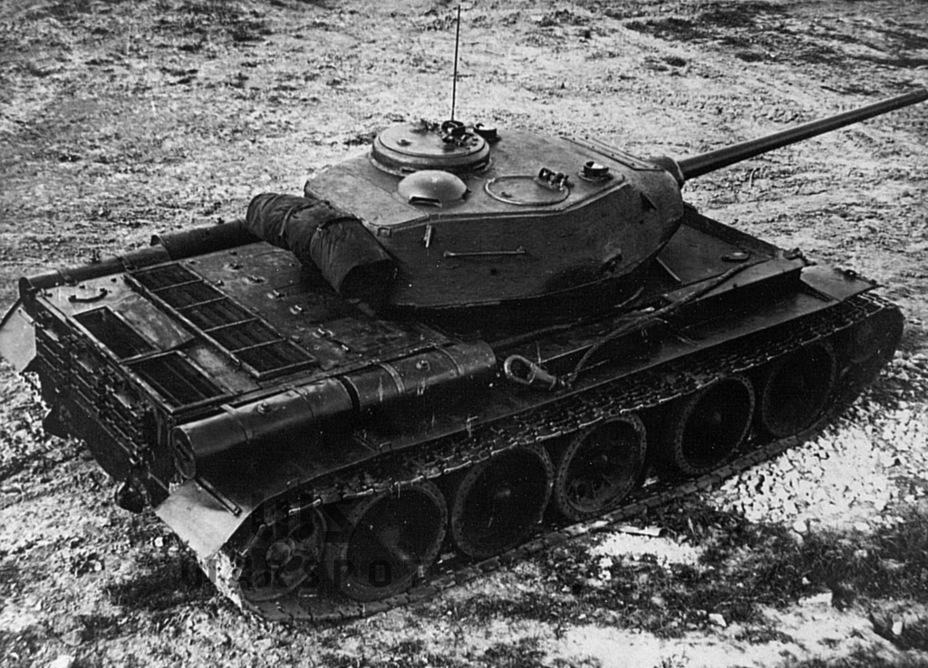
The situation on dirt roads was different. The tank drove on a smashed up road with deep rutting and pitting covered in water. The conditions were even worse than what the first T-44 faced in the winter. The average speed dropped to 13.9 kph, the tank moved in second or third gear. Fuel expenditure increased, the tank consumed 310 L per 100 km, even more than in winter trials. Even with the extra fuel on board the cruising range was just 150 km. The condition of the road can be appraised when these results are compared with the results achieved during off-road driving. The test was supposed to be tougher, but the average speed increased to 15 kph and the fuel expenditure decreased to 295 L per 100 km. The commission was still unsatisfied, as the external tanks were used to achieve necessary range. The internal tanks had to be enlarged. The changes to the cooling and exhaust systems made their mark. The tank only overheated when driving in the toughest conditions. When driving on pavement or off-road the water temperature did not exceed 85 degrees. Recall that the air temperature reached 40 °C during these trials.
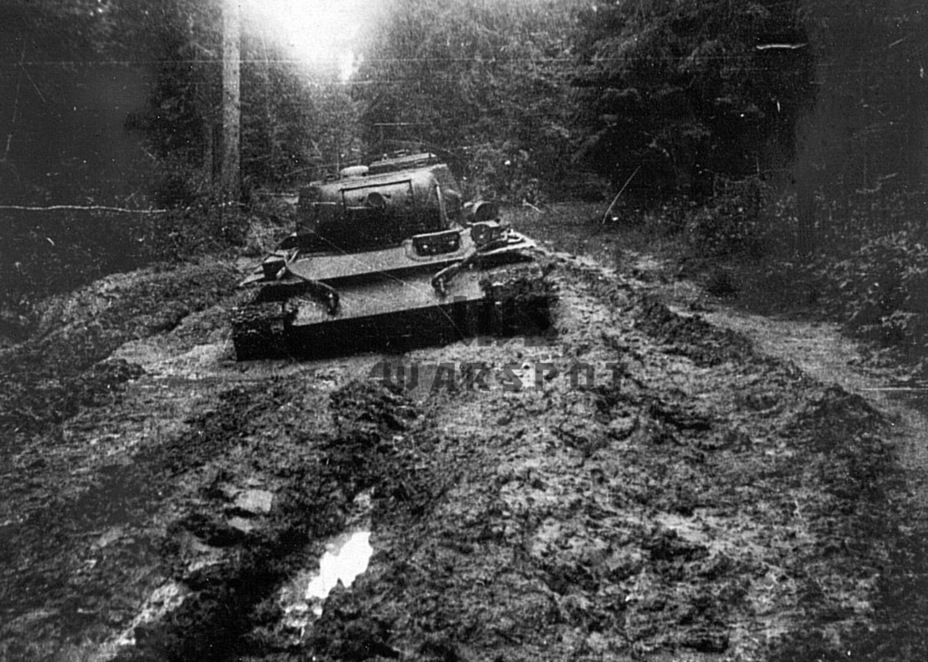
Better conditions than in the winter allowed the tank to achieve a decent performance during special trials. The tank could successfully negotiate lengthy sloped 24-26 degrees steep, with a maximum grade of 31 degrees. Steeper obstacles needed more engine power to climb. The maximum tilt at which the tank could drive was 32 degrees, after which it began to slide. The effort required to steer the tank was around 17-20 kg or up to 32-40 kg when turning in place. The tank could successfully pull a T-34 at an average speed of 11 kph. It also crossed a 1.52 m deep river. Water seeped in through the torsion bar openings but its depth didn't exceed 5-6 cm. When fording a 2 m deep river the engine took on water and stalled.
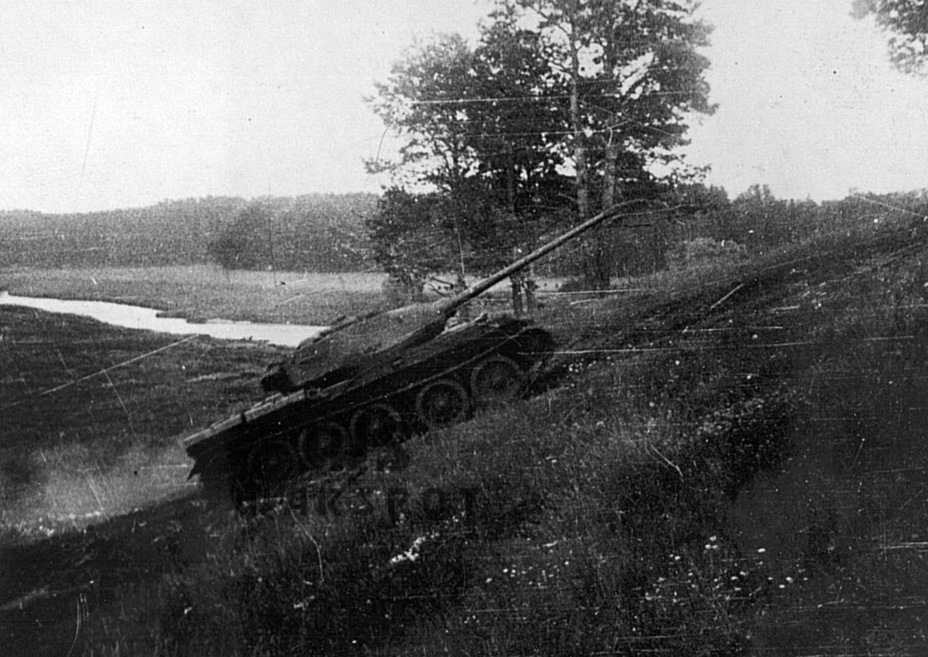
Defects discovered during factory trials largely repeated themselves here. The number of road wheel replacements grew to 16 due to the tougher driving conditions. The issue wasn't just with the increased mass, but also uneven load. Only one wheel had to be replaced among the first two pairs. The tracks were very reliable, only one instance of tearing was recorded at 1326 km. The suspension also worked reliably. The engine worked well, especially the ST-15 starter, which could still use improvements. There were issues with certain elements of the transmission, especially the gearbox and gear train. Finally, one roller on the right drive wheel broke on the 689th kilometer.
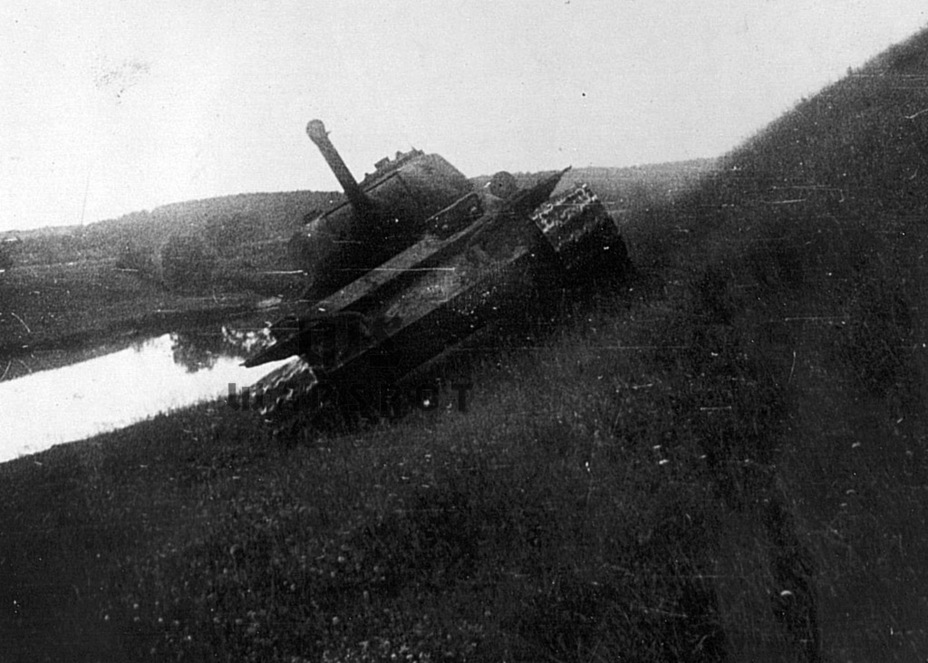
Gunnery trials were also successfully completed. The precision of the gun was as calculated, the maximum rate of fire was 9.2 RPM when firing at a single target and 6-7 RPM against 2-3 targets. This decrease happened due to having to shift from the powered traverse to manual for fine aiming. The peak unaimed rate of fire was 10 RPM. The rate of fire on the move was 4 RPM, and the precision was low. The issue was the same as before, shifting of the center of mass backwards. Issues with the running gear also cropped up. There were complaints about the robustness of the ammunition rack in the front of the hull. The ammunition capacity was also deemed insufficient, and a request was made to increase it to 65 rounds.
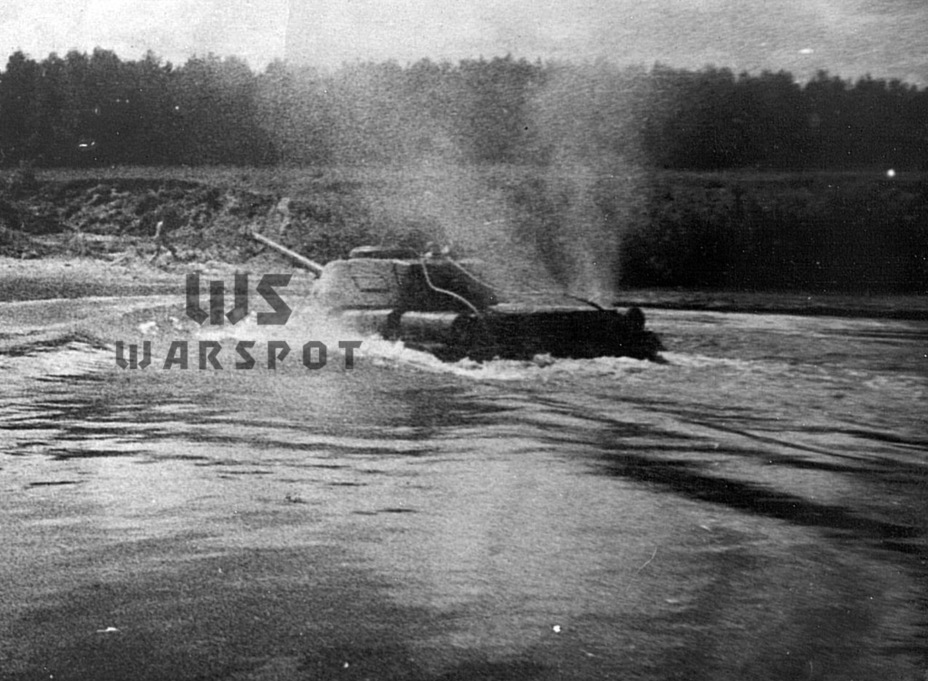
The crew comfort as well as visibility were evaluated separately. The commander's vision was sufficient, but his comfort was not. The seat was badly placed and ejecting brass hit his right foot. The seat had to be moved 5-6 cm to the left and 5-6 cm to the back as well as be made adjustable. The MK-IV observation device could not be used to observe targets more than 1500 m away. A suggestion was made to increase the height of the cupola by 3-4 cm. There were also complaints about the gunner's seat. During the trials his seat was bent and the padding tore due to frequent contact with the recoil guard. A suggestion was made to add a foot-operated electric trigger to avoid issues encountered in trials. There were also issues with the loader's seat. It was suggested that it should be mounted on an arm attached to the turret. Observation from the gunner and loader's stations was good.
The biggest complaints were about the driver's position. The height of his compartment was too low and his instruments were arranged poorly. Experience with foreign tanks including the Light Tank M5A1 was referenced. Its driver could raise his seat and look out of his hatch during travel. The testers wanted the same thing on the T-44, especially since it would allow the designers to drop the observation port and the cabin as a whole.
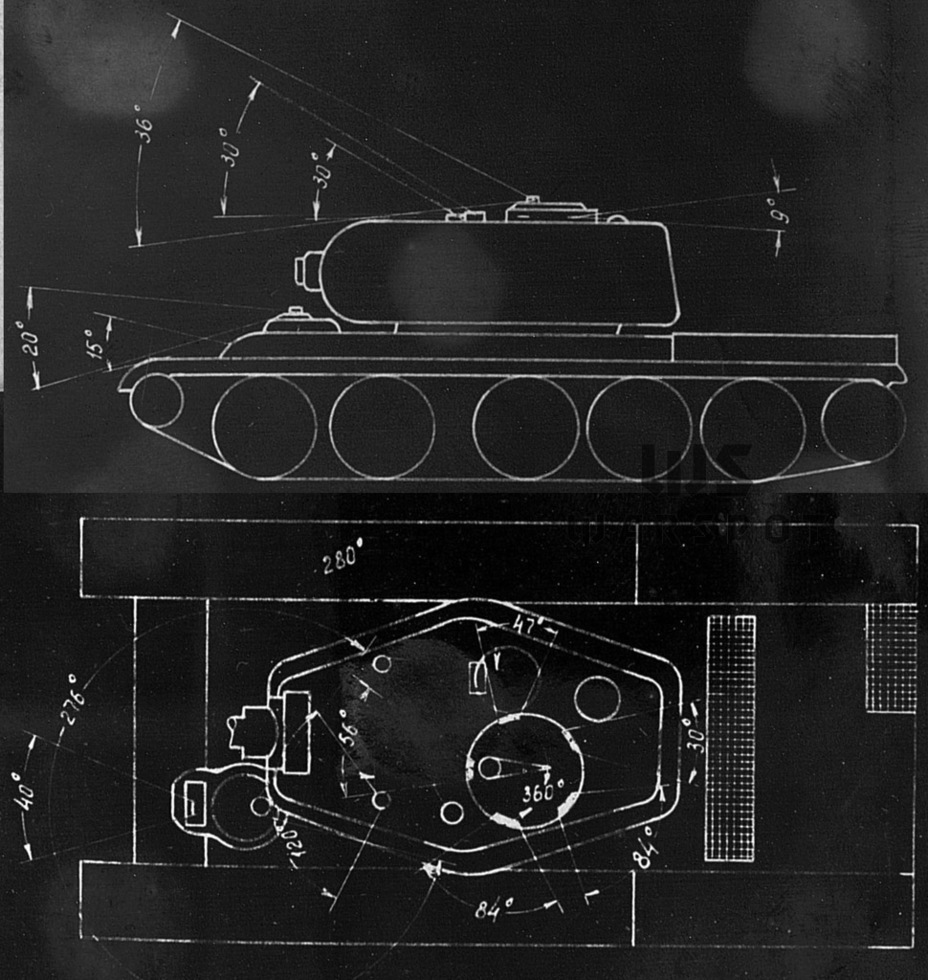
The commission failed the T-44, even though it was evaluated quite highly. The GBTU and NKTP understood both the potential of this vehicle and issues linked to rushing it. That being said, the commission recommended the T-44 for service if the outlined defects could be resolved. A number of changes requested by the GBTU also had to be implemented. The front hull armour had to be increased to 90 mm, the ammunition capacity to 65 85 mm rounds, the fuel capacity to 550 L. The sides of the hull also had to be strengthened, among other changes. The T-44 in its current state was not going to make it into production, but it had promise, so much that Stalin signed GKO decree #6209s «On organization of T-44 tank production at NKTP factories #75 and #264» on July 18th. This decree expected the first 25 tanks in November of 1944. The T-44 was essentially accepted into service in advance.
Hit me with your best shot
Stalin signed decree #6209 based on preliminary results made by the commission on July 6th, 1944. In the meantime, factory #183 carefully kept track of the trials and made changes as the commission requested them. As a result, the third iteration of the T-44 indexed T-44A was already being assembled at factory #183 by mid-July.
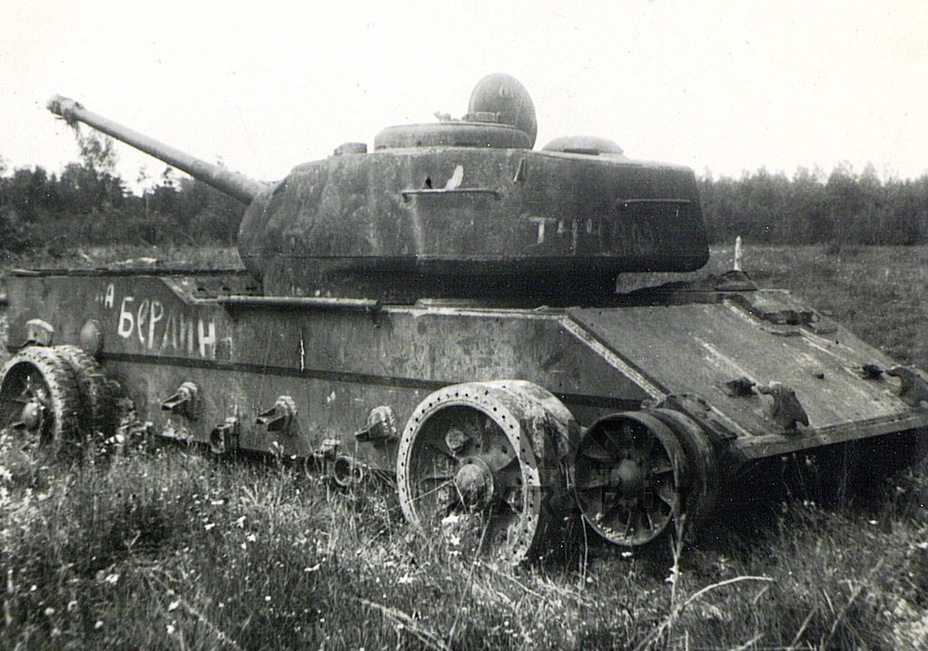
Work on the T-44A continued while the second variant of the T-44 tank was undergoing mobility trials, but penetration trials were held soon after. Even though the T-44A was supposed to have thicker armour, these trials were still required by the order #345s/094 given on May 22nd, 1944. The order required the trials to start on May 25th and end on June 15th with a report due by June 20th, but the trials were shifted due to various production delays and only took place from July 4th to July 21st. These trials were just a formality since the T-44A had a different design, but they were valuable since this time the hull was not shot up on its own. The hull was propped up on four road wheels and also had a turret with a gun, an engine, gearbox, and radiator. This was not just an empty shell but a partially assembled T-44 tank.
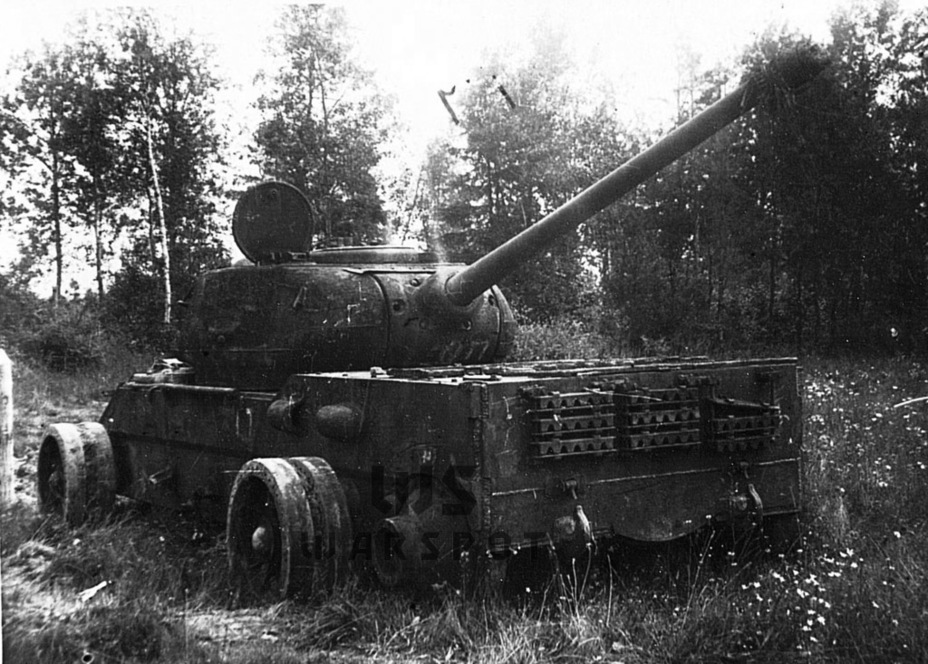
The selection of guns used to fire on this tank was no less interesting. The armour was made to resist the 7.5 cm Pak 40, so weapons with similar characteristics were used: a 76 mm gun with USV divisional gun ballistics and an 85 mm gun with ballistics from the 52-K AA gun. The GBTU considered this protection to not accurately represent the threats of a battlefield, so other guns were used as well. In addition to the SU-76M with a 76 mm ZIS-3 gun, a 75 mm KwK 42 from the Panther and 88 mm Pak 43 L/71 from the Nashorn were used. Both vehicles made their debut at Kursk and were made in large numbers, so the GBTU's worry about their weapons was justified. The results of firing such powerful guns were predictable and only proved further that the armour had to be thickened.
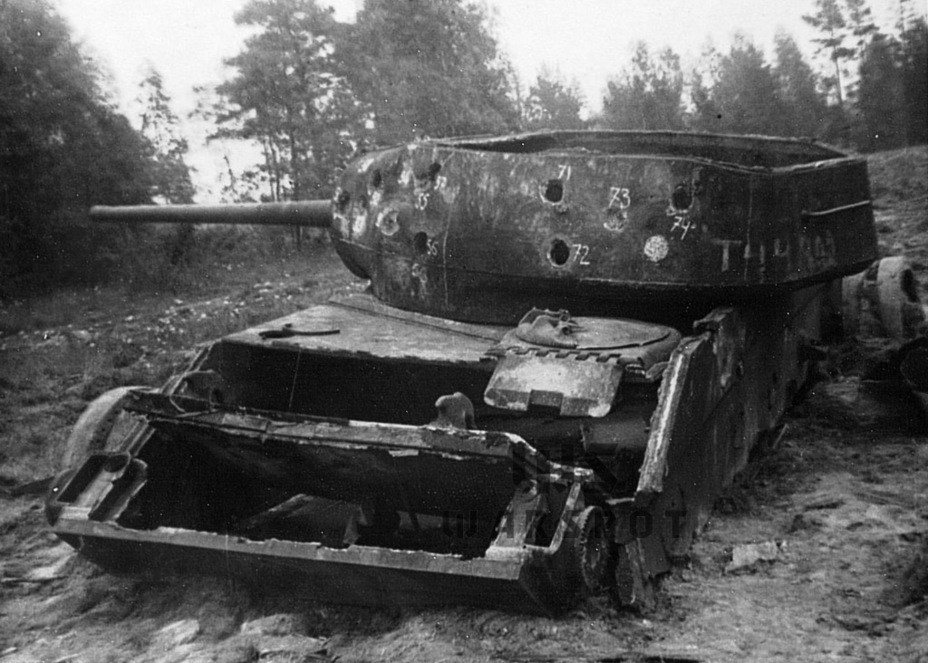
The upper front plate, the toughest part of the armour, was only fired at by German guns. Results showed that it could be penetrated by the Panther's gun from about 700 m and the Pak 43 from 1730 m. It was estimated that the maximum distance from which the Nashorn could penetrate the T-44 was 2 km. After five hits to the upper front plate the welding seams burst and it fell into the tank. After these results there was no point in firing at the driver's cabin and lower front plate.
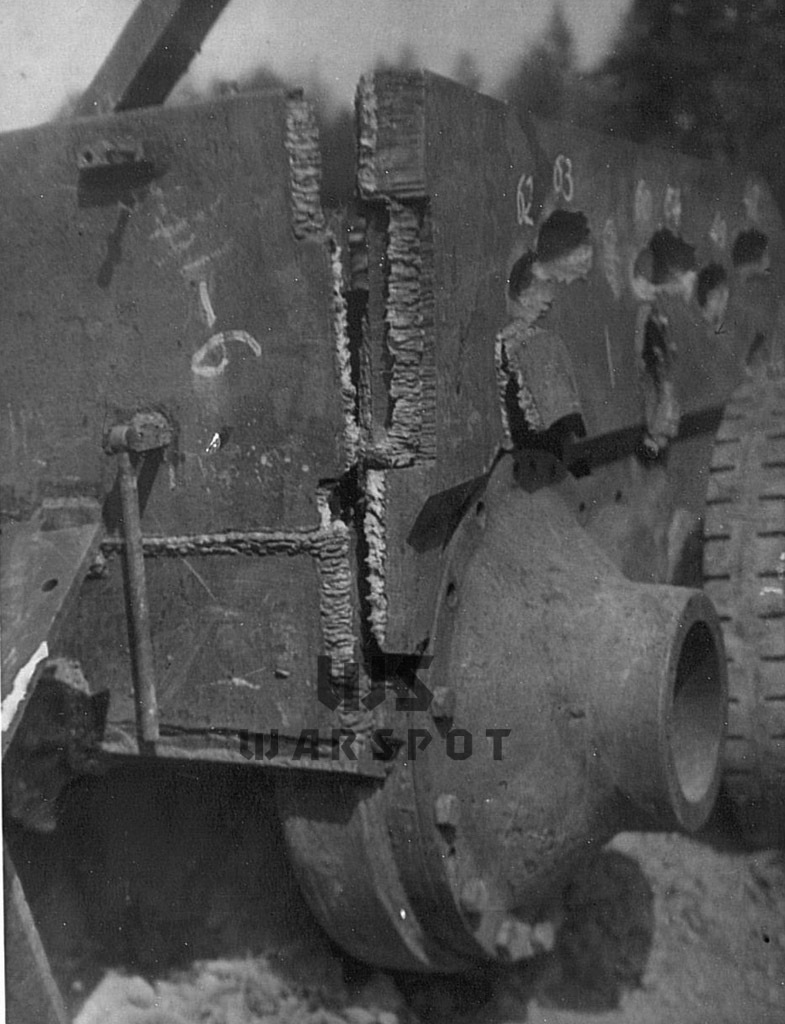
The results of firing at the sides of the hull and turret were also disappointing. At normal the Panther could penetrate this armour from 2 kilometers, at 30 degrees from 600 meters. The Pak 43 could penetrate the side from any angle. The KwK 42 penetrated the turret from 2580 m, the Pak 43 could penetrate it from any range. The side of the hull showed the same issues as the front. After being hit enough times the turret roof seams also burst and it fell into the tank. The design of the commander's cupola was also deemed insufficiently robust, as it jammed from an 88 mm HE shell hit. The quality of the armour used in the hull and turret was deemed satisfactory.
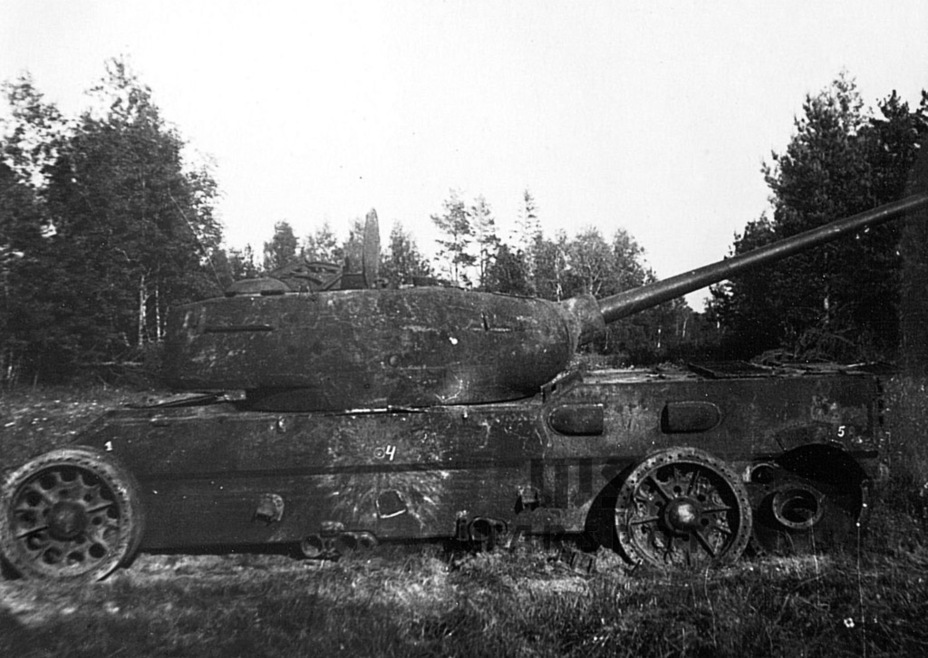
The results were predictable. The second variant of the T-44 was helpless against the 88 mm Pak 43 and protected at ranges over 800-1000 m from the Panther, but only frontally at that. It was clear that the increase in armour thickness that the GBTU demanded was correct.
Another requirement was given after these trials: the thickness of the side armour must be increased to 90 mm to protect from the Panther's gun at medium ranges. A proposal was also made to return to sloped sides, but that would result in a radical redesign and increase in mass. The front of the turret was to be thickened to 130 mm to offer the same resistance as the upper front plate. Factory #183 was asked to use a box joint on the upper front hull plate and improve joins of other plates. The driver's cabin was not even mentioned, although factory #183 discarded the idea by early July on their own.
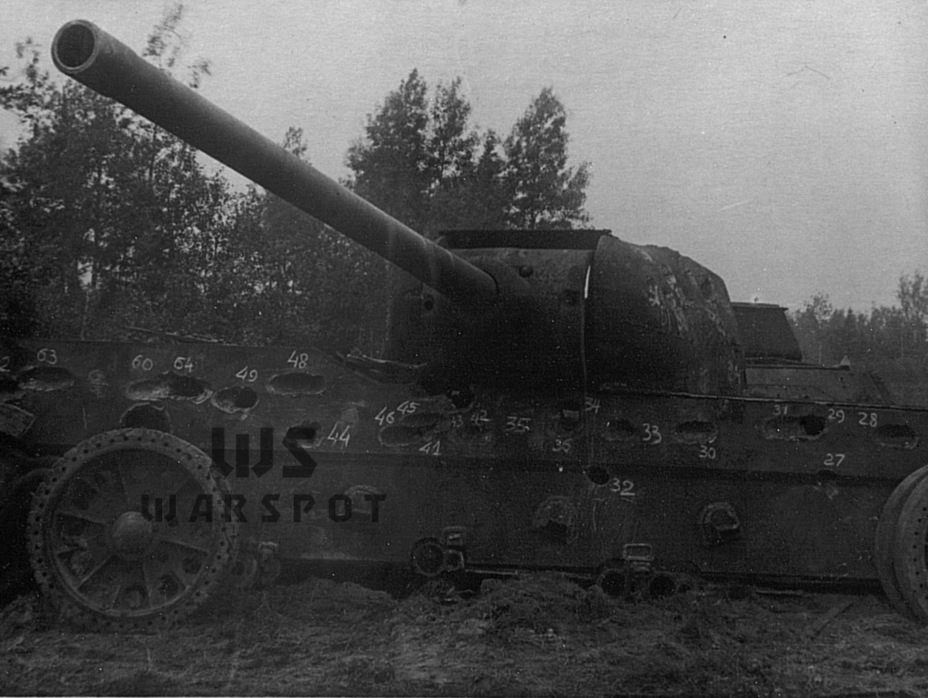
The delays in penetration trials had consequences. As assembly of the experimental T-44A began before the results of the trials were known, it only partially met the new requirements. As a result, even this new tank was not the final iteration that would be put into production. Nevertheless, just one step remained. Unlike with the T-43, factory #183 finally hit its mark and provided the GBTU with a production ready tank before requirements were changed once more.
Translated by Peter Samsonov. Read more interesting tank articles on his blog Tank Archives.
Sources:
- Central Archives of the Russian Ministry of Defence;
- Russian State Archive of Economics;
- Russian State Archive of Socio-Political History;
- Vyacheslav Malyshev — diary of the People's Commissar, Bulletin of the Archive of the President of the Russian Federation. No.5, 1997.






